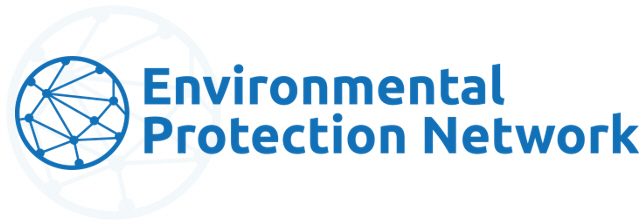Please share this information widely! And please sign up to receive these updates in your inbox every 2 weeks or so.
As we continue to support organizations with their Community Change Grants (CCG) applications, we want to ensure that we are providing the most up-to-date, comprehensive resources and information available. EnDyna, EPA’s CCG contracted technical assistance (TA) provider, recently released extremely detailed, EPA-approved guidance that we have incorporated into our resources to support organizations’ efforts to create strong, competitive applications.
Below, you will find:
- Updates on EnDyna’s Technical Assistance Support
- An Explanation of How EPN’s CCG Resources Have Been Updated to Reflect EPA’s Latest Guidance
In addition, we have included:
- EPN’s Pre-Award Resources
- Information on the Recently Launched Direct Pay Navigator and Project Finance Hub
- Extreme Heat Video
EnDyna’s CCG Technical Assistance Support
1) Technical Assistance Updates
Please be aware that the CCG Program’s deadline is still November 21, 2024. That said, to potentially receive pro bono TA from EnDyna, please submit a completed TA intake form no later than 11:59 p.m. EDT on August 16, 2024.
In addition, although EPN had previously reported an August 1, 2024, deadline for applicants to submit proposals to EPA if they would like to potentially receive feedback and resubmit their applications by the November 21 deadline, this deadline does not exist. We apologize for any confusion this may have created. However, because EPA will continue to review and select applications on a rolling basis until funds are committed, EPN still encourages communities to submit their applications as soon as possible.
EPN’s Updated CCG Resources
2) EPN Resource Updates
We recently added a Track I and Track II Application Evaluation Criteria Worksheet for applicants to our CCG guides, and we are making some minor revisions to strengthen our Track I sample narrative and Resilience Hub sample. We will send out an email to let you know when the revisions are complete.
In addition, please read through the updates below carefully and review your application elements to ensure that your application reflects the most up-to-date guidance from EPA to create a competitive application.
EPN has updated its Track I resources:
– We now have a link to EnDyna’s Track I Application Development Workbook, including guidance on Community Vision, Climate Action and Pollution Reduction strategies, Community Engagement and Collaborative Government, Community Strength Plan, Statutory Partnership, Readiness Approach and Compliance Plan, and Budget.
– We have replaced our previous Attachments’ instructions and samples with EPA-approved EnDyna resources, including worksheets that we highly recommend you use to think through and identify specific items you should include in your application:
Attachment A: Program Budget Description Worksheet, Budget Template and Sample Budgets. Your budget should be simple and clear, like the samples provided.
Attachment B: Statutory Partnerships Worksheet and Sample Agreement.
Attachment D: “How to Create a Project Area Map Using EJScreen Video.” Please make sure your project area map clearly corresponds to the Project Area, and shows which Census block groups within the Project Area are EPA IRA Disadvantaged Communities.
Attachment E: Community Engagement and Collaborative Governance Worksheet. Your Community Engagement and Collaborative Governance Plan can be up to 10 pages long and should be very comprehensive.
Attachment F: Community Strength Plan Worksheet. Your Community Strength plan needs to include all of the requirements specified in the NOFO, including the economic benefits of your project and anti-displacement measures.
Attachment G: Readiness Approach Worksheet. Your Readiness Approach should be concise but also specific. For example, it should define any specific government approvals.
Attachment H: Compliance Plan Worksheet. Your Compliance Plan can be up to 5 pages long and should be detailed and comprehensive.
EPN has also updated its Track II resources:
– We now have a link to EnDyna’s Track II Application Development Workbook, including guidance on Community Engagement, Meaningful Engagement, Statutory Partnerships, and Budget.
– We have replaced our previous Attachment A instructions and samples with EPA-approved EnDyna resources, including worksheets that we highly recommend you use to think through and identify specific items you should include in your application:
Attachment A: Program Budget Description Worksheet, Budget Template and Sample Budget. Your budget should be simple and clear, like the sample provided.
EPN’s Pre-Award Resources
3) Resources for EPA Grantees
Reaching an award agreement with EPA can often take 6 months or more, and it’s a particularly steep learning curve for first-time federal grant recipients who must meet numerous requirements and milestones. In order to assist EPA grantees, EPN has compiled resources to help navigate many of the pre-award requirements. In addition, we have also created a DRAFT checklist for the conditional awardees and partners of EPA’s Climate Pollution Reduction Grant (CPRG) Program: Implementation Grants to guide entities through grant negotiations and to grant award acceptance.
New Direct Pay Resources
4) Direct Pay Navigator and Project Finance Hub
Lawyers for Good Government (L4GG), Blue Crab Strategies, and Atlas Public Policy recently launched the Clean Energy Tax Navigator and the Project Finance Hub to provide free tax, financial, and legal expertise to applicable entities depending on where they are in the process of setting up clean energy projects. The Clean Energy Tax Navigator, powered by L4GG, is a one-stop-shop to claim direct pay. The Project Finance Hub, powered by Atlas Public Policy, is a clearinghouse for tools and guidance to finance clean energy projects.
Extreme Heat Video
5) Extreme Heat Video and In-person Screening and Advocacy Discussion
Smart Growth America, in collaboration with the Partnership for Southern Equity (PSE) in Atlanta, produced a video highlighting the experiences of residents, activists, and climate policy leaders with extreme heat and their communities’ needs for policy and advocacy strategies that create safer and more accessible infrastructure.
In addition, on Wednesday, July 24, from 6-8pm, folks in the Atlanta area are invited to join a video screening and advocacy discussion at PSE. For more information, contact Joseph Mendonca at jmendonca@

